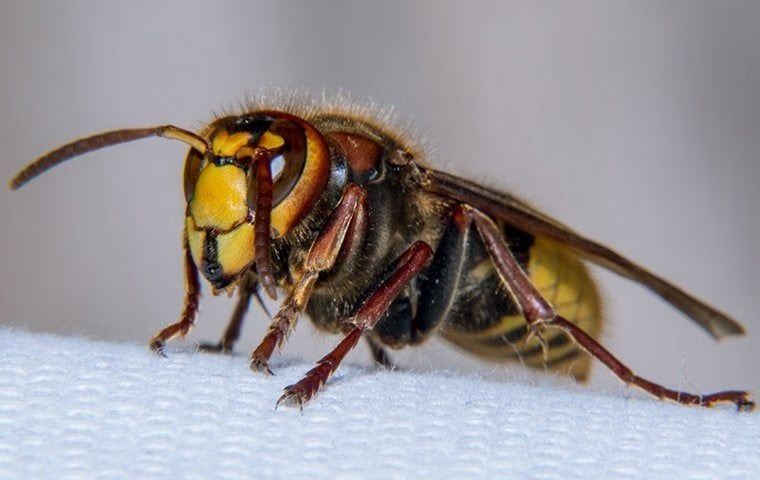
European Hornets Identification & Prevention
Frequently Asked Questions about European Hornets
Have questions? We are here to help. Still have questions or can't find the answer you need? Give us a call at 252-424-7966 today!

-
How can I prevent European hornets in the future?
Avoid problems with European hornets with the help of the following prevention tips.
- If there are fruit trees on your property, pick up fruits that have fallen to the ground.
- Limit the amount of flowering vegetation planted on your property.
- Place gardens away from the outside of your home.
- Remove standing water from your property.
- Replace white outdoor lightbulbs with yellow or LED bulbs, which are less attractive to insects.
- Keep outdoor lights turned off when possible.
- Seal spaces in the exterior walls and foundation of your home.
- Place caps on chimneys.
- Repair openings under roof eaves.
If you are still seeing European hornets, reach out today to get started on our stinging insect control services.
-
How do I get rid of European hornets?
The best way to eliminate European hornets is with help from Albemarle Termite & Pest Control. Our technicians are highly trained and provide safe, effective, and affordable home pest control. Our local, family-owned company puts customers first and works to exceed expectations at every turn. If you are looking to eliminate pests from your property once and for all, call Albemarle Termite & Pest Control today!
-
Where will I find European hornets?Unlike most species of stinging insects that are active only during the day, European hornets are also active at night. They are often seen gathering around outdoor lights at night, hunting insects attracted to the light. European hornets are aerial nesters, preferring to nest at least six feet up off of the ground. They cover their nests in a chewed-up material they create from cellulose found in tree bark and decaying wood. Tree hollows, rafters in barns or garages, walls voids, and attic spaces are common nesting spots for European hornets.
-
Why do I have a European hornet problem?European hornets choose properties to invade that provide them with suitable areas to build their nests and forage for food. The more sources of food available, the greater the chance that European hornets will choose a property for nesting and/or foraging. Gardens, fruit trees, wooded areas, and overgrown vegetation provide European hornets with ample sources of insects and sweet food.
-
Are European hornets dangerous?Though their large size and intimidating appearance make these hornets seem dangerous, the truth is they are not overly aggressive. European hornets usually leave people alone. In the event that a sting does occur, their venom is strong enough to trigger a reaction in those who are allergic. These hornets have smooth stingers and are capable of stinging a victim repeatedly. European hornets can also cause damage to trees as they peel away the tree’s bark to gain access to the sweet sap inside.
-
What are European hornets?
The only “true” species of hornet living in the U.S. is the European hornet. They are large-sized insects with brown bodies, yellow or orangish abdominal stripes, and paler-colored faces. Adults grow to between ¾ to 1 ½ inches in length. Like other species of stinging insects, when living outside and away from people, European hornets are beneficial. They hunt insects to feed their young, which helps to control nuisance insect populations. European hornets also feed on sweet things like tree sap, honeydew, and overripe fruits that have fallen to the ground.



